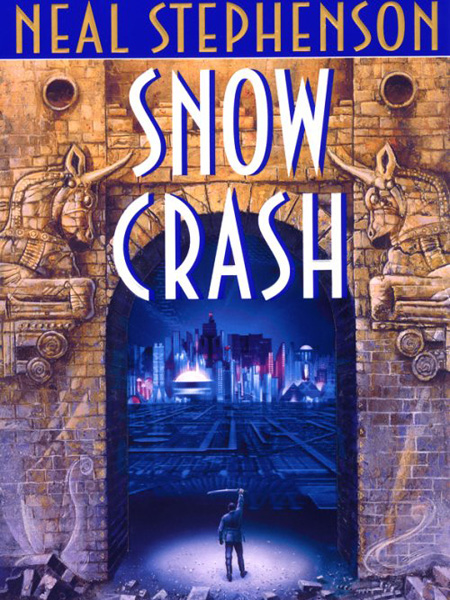June 23, 2007
Snow Crash’s Metaverse A Reality in 10 - 20 Years

Every now and then, two great ingredients come together to create something magical. The latest “peanut butter and jelly” moment comes from two powerhouses in Web 2.0: Google Earth and Second Life. Arguably the second-most popular and influential work cyberpunk, Neal Stephenson’s Snow Crash, has fueled a generation of virtual worlds developers, who have continually strived to achieve the vision laid out in this wonderful story. Now it looks like that possibility is on track to arrive in a reality near you.
Question: What do you get when you combine Google Earth with Second Life?
Answer: The Snow Crash Metaverse!
The MIT Technology Review has a wonderful article, titled, “The World Wide Web will soon be absorbed into the World Wide Sim: an environment combining elements of Second Life and Google Earth.” It describes how these two, when combined with “mobile augmented reality” tools will create a transformative environment that allows people to simultaneously interact with those around them in reality, and those geospacially around them virtually.
…within 10 to 20 years–roughly the same time it took for the Web to become what it is now–something much bigger than either of these alternatives may emerge: a true Metaverse. In Neal Stephenson’s 1992 novel Snow Crash, a classic of the dystopian “cyberpunk” genre, the Metaverse was a planet-size virtual city that could hold up to 120 million avatars, each representing someone in search of entertainment, trade, or social contact. The Metaverse that’s really on the way, some experts believe, will resemble Stephenson’s vision, but with many alterations. It will look like the real earth, and it will support even more users than the Snow Crash cyberworld, functioning as the agora, laboratory, and gateway for almost every type of information-based pursuit. It will be accessible both in its immersive, virtual-reality form and through peepholes like the screen of your cell phone as you make your way through the real world. And like the Web today, it will become “the standard way in which we think of life online,” to quote from the Metaverse Roadmap, a forecast published this spring by an informal group of entrepreneurs, media producers, academics, and analysts (Cascio among them).
Imagine a scene in San Francisco, where you want to have a meeting with two associates at a local coffee shop, but at the last minute, you decide that three others need to participate. They can log into Second Life, and then show up in the coffee shop virtually. You and your friends have special glasses and sound devices that allow you to see and hear them as if they were literally at the coffee shop. By overlaying detailed maps onto a Second Life sim, and then tying them together with augmented reality sensors scattered about the locale, people will be able to simultaneously live in both virtual and real events, tied to the same geographic location. The possibilities are endless.

In the field, technicians or soldiers may get 2-D slices of the most critical information through wireless handheld devices or heads-up displays; in operations centers, managers or military commanders will dive into full 3-D sensoriums to visualize their domains. “Augmented reality and sensor nets will blend right into virtual worlds,” predicts Linden Lab’s Ondrejka. “That’s when the line between the real world and its virtual representations will start blurring.”
I asked David Gelernter why we’d need the Metaverse or even mirror worlds, with all the added complications of navigating in three dimensions, when the time-tested format of the flat page has brought us so far on the Web. “That’s exactly like asking why we need Web browsers when we already have Gopher, or why we need Fortran when assembly language works perfectly well,” he replied.
The current Web might be capable of presenting all the real-time spatial data expected to flow into the Metaverse, Gelernter elaborates, but it wouldn’t be pretty. And it would keep us locked into a painfully mixed and inaccurate metaphor for our information environment–with “pages” that we “mark up” and collect into “sites” that we “go to” by means of a “locator” (the L in URL)–when a much more natural one is available. “The perception of the Web as geography is meaningless–it’s a random graph,” Gelernter says. “But I know my physical surroundings. I have a general feel for the world. This is what humans are built for, and this is the way they will want to deal with their computers.”
We all know the web itself will once again morph into something completely different. Geospatial positioning is intuitive for structuring our reality, so why not use it to structure cyberspace? And yeah, this certainly brings us on track to move ever closer toward a post-human society. When smart phones are passé and augmented reality devices become the norm, our cultural patterns of interaction will again shift in counter-intuitive ways. When combined with transformations to our bodies we see with prosthetics research, and transformations of machines with robots and AI advances, our society may look very different far sooner than we think.




